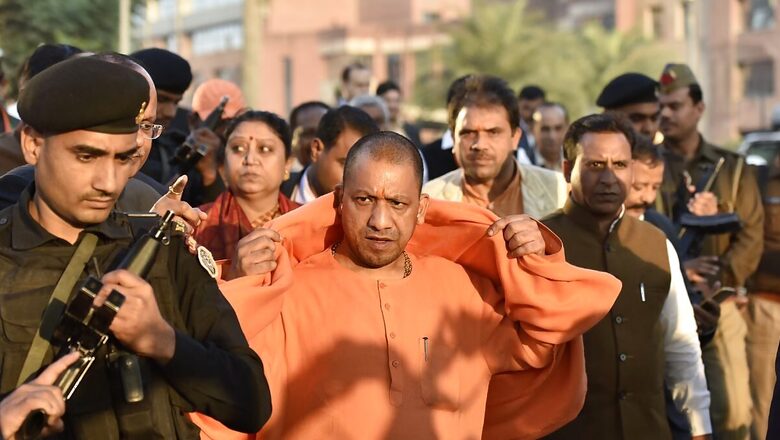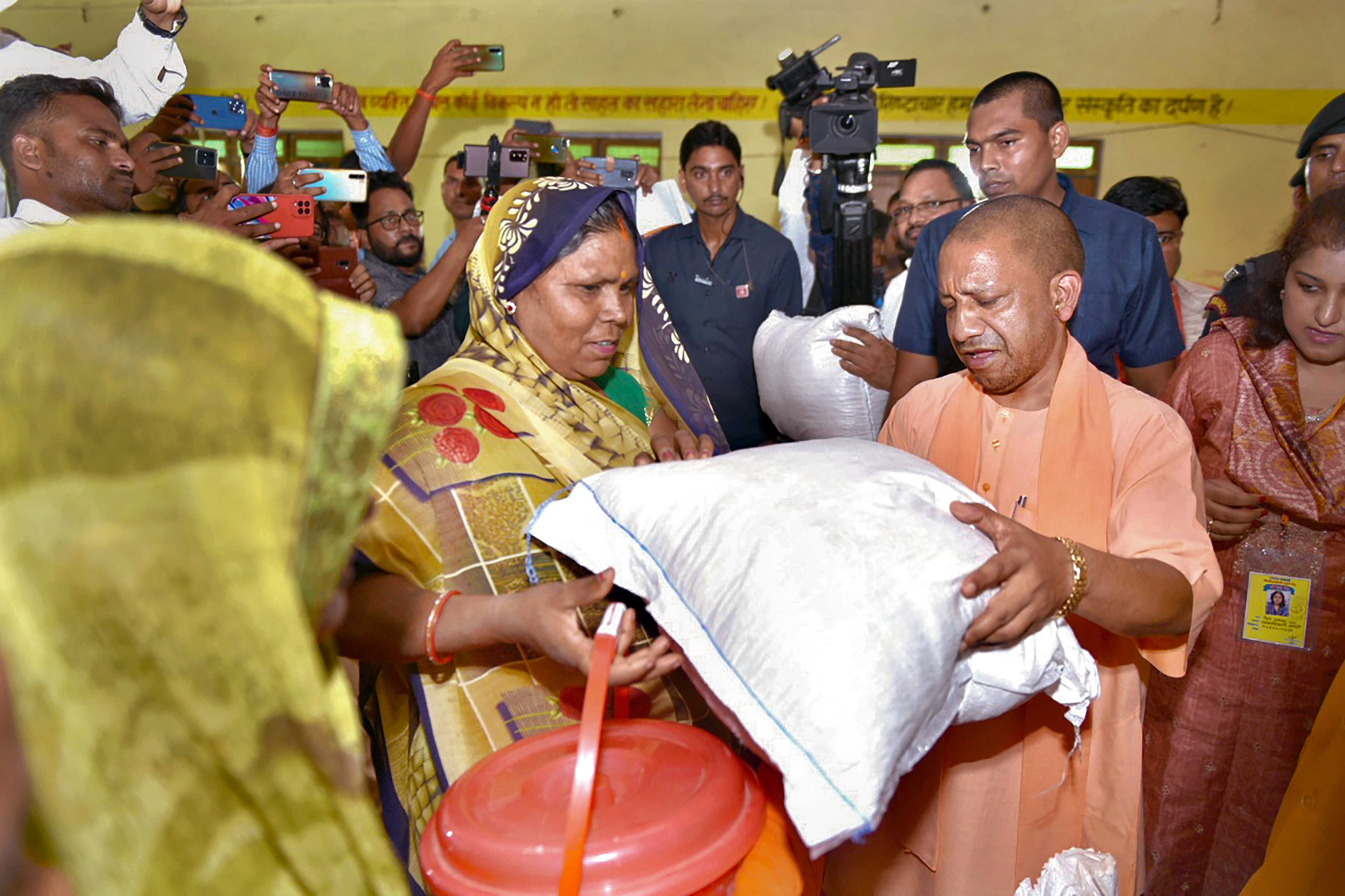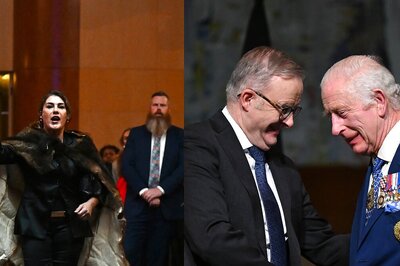
views
It was the evening of March 18, 2017, and the excitement amidst the big crowd of journalists in the lobby of the Lok Bhawan building in Lucknow was bubbling. Inside the building, the ground-floor auditorium was packed with elected MLAs of the Bharatiya Janata Party (BJP). Outside it, in the portico, reporters and lensmen were anxiously waiting for the man of the moment — Yogi Adityanath.
The Member of Parliament, who was not even an elected MLA, was now destined to be the surprise chief minister of India’s most populous state of Uttar Pradesh. Having stormed the Vidhan Sabha election with an astonishing 300-plus victories, the BJP had seen an intense internal struggle among its aspiring leaders for the top job. However, as the countdown to the legislative party began, it was Yogi Adityanath who had the last laugh.
As a stream of cars zoomed inside the Lok Bhawan building, Adityanath emerged from his white SUV, wearing sunglasses and waving a victory sign to camerapersons who were eager to capture every single minute of the dramatic arrival. The ‘Yogi Raj’ in UP had begun but it was to be a long journey before a strong ‘Brand Yogi’ would be cemented.
Now, with straight six years in office — an honour that Adityanath is the first to achieve — the journey that started with him being a surprise pick has come a long way. ‘Brand Yogi’ in politics is now an established idea.
‘YOGI RAJ’ BEGINS
As Adityanath became the chief minister, it was the beginning of a new journey for the man who had been both a politician and a Hindu religious leader. The five-term member of Lok Sabha from Gorakhpur was and still is the chief ‘Mahant’ of the famous Gorakhnath Peeth.

No doubt the BJP had played a big gamble in picking Adityanath as the chief minister. In a state so defined by caste and identity politics, an upper-caste Kshatriya could have either been a boon or a disaster. The fact that the OBCs had played the most important role in BJP’s rise to power could not have been ignored. In order to do a fine balancing of caste, BJP also decided to bring in OBC Keshav Maurya and Brahmin Dinesh Sharma as two deputy chief ministers.
However, as Adityanath settled in and moved ahead, rolling out his vision and strategy, it was soon clear that the man had both the needed, strong Hindutva assertion to dilute the conflicting caste aspirations as well as the policy and governance narrative to suit the political agenda. The surprise CM seemed to have a roadmap for carving out a unique narrative around him.
THE 3 AXES OF YOGI MODEL
From Day One of his government, Adityanath has been guided by three most defining approaches — His unwavering commitment to the political ideology of Hindutva, policy of zero-tolerance towards mafia and organised crime and the resolve to make the state a robust economy and a favoured investment destination.
No doubt the Opposition has time and again countered these three commitments of the Yogi Sarkar. The criticism of his alleged ‘pick and choose’ policy while dealing with the mafia was a serious charge against the government. Adityanath’s staunch persona as a Hindutva icon has often been criticised as being divisive. Also, his claims on the development front and making the state a one trillion dollar economy by 2027 have been argued against with high figures of unemployment and questions around the actual business investments in the state.
But despite the Opposition’s attacks, Adityanath clearly seems to have struck a chord with the majority of people in the state. His style — even if a bit harsh and sometimes drawing in the accusation of being in defiance of the law — has generally been endorsed by the common man.
The ‘Bullet and Bulldozer’ policy that has virtually become a hallmark of Adityanath’s governance model was one such decision. It has often raised eyebrows of legal rights groups and the Opposition but seems to have got endorsement in the people’s court. The perception of a positive change in the state’s law and order situation has been largely accepted by the people — an approach that had become the hallmark of ‘Brand Yogi’ in politics and governance.

The Hindutva emphasis has been glaringly visible from the start. The very first decision that was strictly enforced when Adityanath first became the chief minister in 2017 was to ban sale of meat and close meat shops during Navratri. Following it was stringent enforcement of the law banning cow slaughter.
Over the years, Adityanath’s decision to bring in a law against ‘Love Jihad’ — legally termed as the law against forceful religious conversion— his zeal for bringing back the grand Deepotsav celebrations in Ayodhya on Diwali and commitment to the cause of the under-construction Ram Mandir in Ayodhya have further cemented his image as a ‘Hindutva’ icon and strengthened Brand Yogi.
The third axis of the Yogi Model is economic — an idea which is still a work in progress. Unlike the Hindutva and law and order front, economic growth and positioning of UP as a business investment decision is a phenomenon which is actually rolling out now in a significant way.
The recently concluded Global Investors’ Summit in Lucknow has surely caught the larger imagination with an astonishing claim of investment MOUs to the tune of more than Rs 33 lakh crore. The summit has been hailed as a major step forward in the entire nation’s growth story by none other than Prime Minister Narendra Modi himself.
No doubt Team Yogi and BJP both now claim that the successful summit will roll out the carpet for the state’s journey to being a trillion dollar economy over the next four years. The economic revival of the state, which still drags far below other states in statistics around development, growth and social indices, is the third hallmark of ‘Brand Yogi’ in politics.
THE ROAD AHEAD
As the surprise CM of 2017 now completes six straight years in office after BJP’s second consecutive win in assembly polls in March last year, it is also a stamp on ‘Brand Yogi’ within the BJP’s politics along with the much-bigger ‘Brand Modi’.

The 2022 electoral win of the BJP clearly had the imprint of both Modi and Yogi. In his second term as the chief minister, Adityanath now looks more confident and in control of the political narrative.
No doubt his party has still chosen to keep Keshav Maurya and Brijesh Pathak as his two deputy chief ministers but Adityanath is in far more control of governance and has left his imprint as the leader in the state.
Six years in office now just seem to be a number that will be added on over the next few years — at least till 2027 when the state again goes to polls. Till then, ‘Brand Yogi’ is likely to grow further. It will be interesting to watch what narrative it further builds upon, both in politics of the state as well as the national landscape.
Read all the Latest Politics News here




















Comments
0 comment